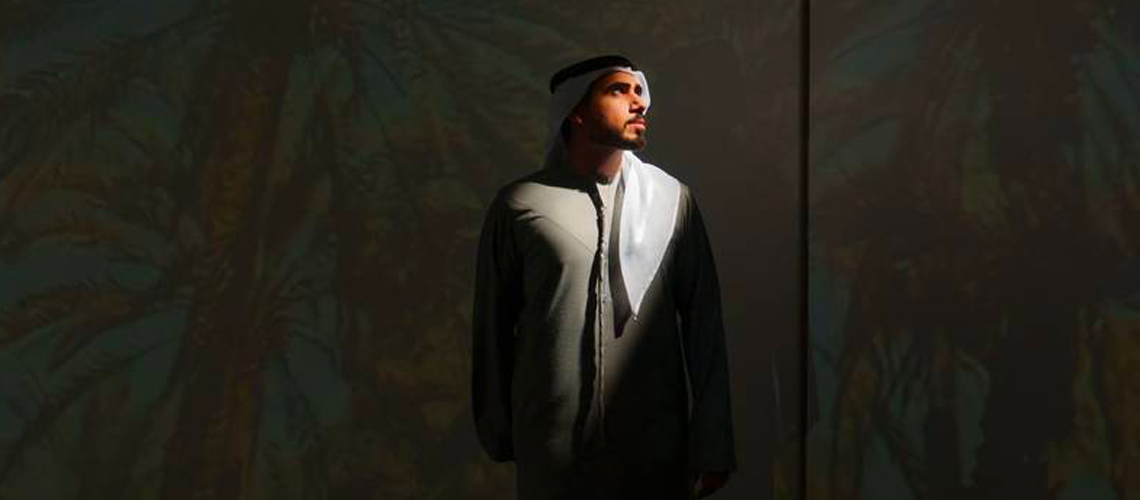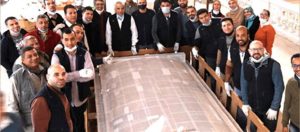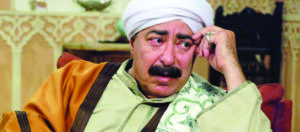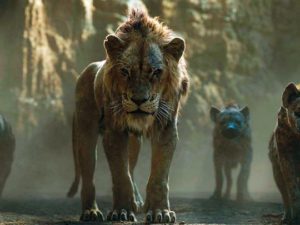The Emirati artist’s audio-visual installation ‘Physiognomy, Land and Territory’ is inspired by the practice of Firasa
Aliteracy of the surrounding environment and an ability to discern what it suggests, Firasa is an old observation-based practice that was vital to desert-dwelling life in the Arabian Peninsula.
Bedouin navigated the capricious, harsh landscape by relying on intuition. By observing the elements and reading the starry night skies, they were able to forecast weather, find water sources and know where best to pitch their tents.
Emirati multidisciplinary artist Ahmad Al Areef Al Dhaheri evokes Firasa in his audio-visual installation Physiognomy, Land and Territory, which was unveiled at Louvre Abu Dhabi on April 15.
The installation is set near the Ottoman Pavement Fountains. With large screens showing broad and close-up shots of babbling rivers, rustling palm fronds and rolling clouds, the area is transformed into an immersive space that summons a heightened sense of environmental perception and intuition.
It is also a visual diary of the artist’s pursuit of Firasa.
“From the Greek term physiognomy, Firasa means discernment in Arabic. [It] is an old science based on observations and intuitions to form an opinion,” Al Dhaheri says. “Unlike common sense, it requires a deep understanding of our surroundings to reach an accurate and insightful discernment.”
The footage seen in the work was shot over several continents, and encompasses disparate landscapes as well as broad shots of the night sky.
“It began with an informal conversation on how I would transform an area in the museum into an immersive space with visuals that reflect my work,” Al Dhaheri says of the project. “Since then, I have been capturing moments using my iPhone while also thoroughly researching physiognomy.
“I have been exploring and trying to understand how physiognomy works by having close-up shots and observing the many differences in nature.”
In its initial phases, the project was not set on one distinctive theme, Al Dhaheri says, but rather focused on periods of meditation and long hours of observation.
“Since my focus was dedicated to the outdoors and remote locations, changes with the weather were inevitable and created challenges in the quality of the shots that were taken, which meant revisiting specific locations for reshoots,” Al Dhaheri says. “From an artistic point-of-view, this merely made it a better experience filled with new learnings. The project took around six months to shoot, edit, test, and execute.”
While some people are naturally capable of unlocking Firasa, Al Dhaheri says the topic was a challenging one to research and adapt as it requires several years of practice.
“Firasa undoubtably influences my daily encounters, specifically with situations that require sharp thinking and problem-solving abilities,” he says. “This results in more accurate predictions to perform or execute certain things while remaining focused throughout the process.”
Physiognomy, Land and Territory sustains the local environment-related themes that Al Dhaheri explored in his 2020 installation Al Lamad.
:quality(70)/cloudfront-eu-central-1.images.arcpublishing.com/thenational/EOSH2IZFVVACFPKYFVT2NORS4Y.jpg)
A sundial consisted of a long pole planted on flat land, the Lamad was a key component of the falaj. Al Dhaheri’s installation, made of mud, wood and coral stone, explores how this astrological instrument was the heart of the traditional irrigation system, which the local residents depended for their livelihood.
“The whole economy was based on the operation of this tool,” he says. “Societies across the UAE relied on agriculture, which dictated where they lived and worked. The falaj irrigation system functioned as the core of those societies.”
Not everyone could make use of the sundial, however. It required a discerning person with astrological knowledge to operate. In traditional UAE society, that person was known as Al Areef. Al Dhaheri says his great grandfather filled that role in his community.
“He practised physiognomy or Firasa daily and acknowledged it as a science, just like his predecessors did.”
Physiognomy, Land and Territory: An audio-visual experience is on view at Louvre Abu Dhabi until May 15
Ahmad Al Dhaheri evokes Bedouin science in Louvre Abu Dhabi installation
www.thenationalnews.com
ALOWAIS CULTURAL FOUNDATION




